Gauge 1 Pullmans are based on the monocoque K-Type steel-sided stock introduced in the late 1920s. A total of 33 K-Type Pullman cars were built with the first batch of 20 cars destined for LNER and the newly branded Queen of Scots and West Riding Pullman trains in July 1928. A further nine first-class vehicles were supplied the following year for the GWR with the launch of the Torbay Pullman Limited and the Plymouth Ocean Liner Specials.
At the end of the short-lived GWR experiment, this set of Pullman cars was transferred to Southern metals for Southampton Ocean Liner Specials and the new Bournemouth Belle service which commenced operation on 8 July 1931. A further four third-class Pullman cars based on the 1928 designs were added to the Bournemouth Belle service. Up until WW2 Southampton Ocean Liner Specials were generally made up of three to four Pullman cars (without parlour brakes) together with an assortment of other Southern carriage stock and luggage vans.
By the early 1950s Pullman travel was de rigueur as many Southampton boat trains pulled into the newly completed Ocean Terminal consisting entirely of Pullman cars. Named after individual liners and their shipping lines, Cunard, United States Line, P&O, Union Castle, deluxe London travel connections extended from the ship to the rail head.
Gauge 1 Pullmans will be produced to echo the pre-nationalisation period of the 1930s and 40s and the BR era when new Pullman services were introduced.
Pullmans will be produced in standard umber and cream livery and come with grey roofs. The pre-nationalisation stock will incorporate the original Pullman emblem and third-class vehicle designation; they will look fabulous hauled by the new Aster P2 locomotive. The BR Pullmans will come with the new simplified Pullman insignia, revised lining, and car no. designation.
K-Type Pullmans in umber and cream
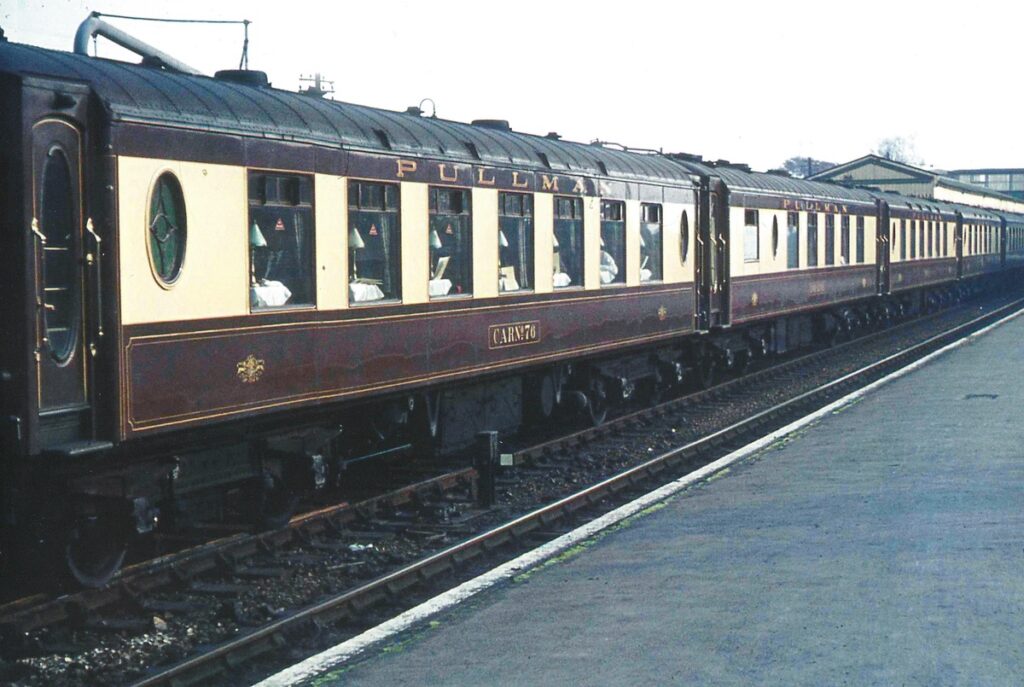
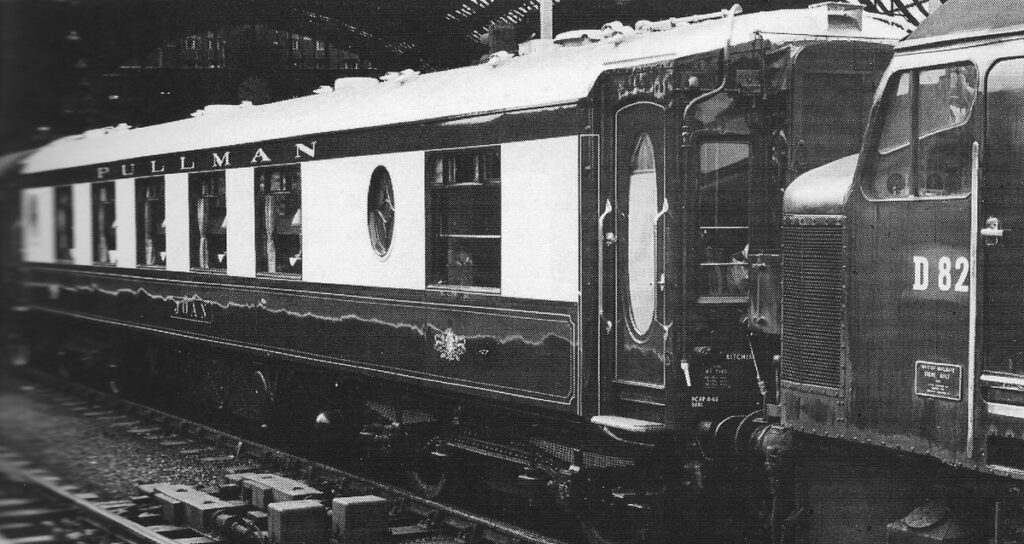
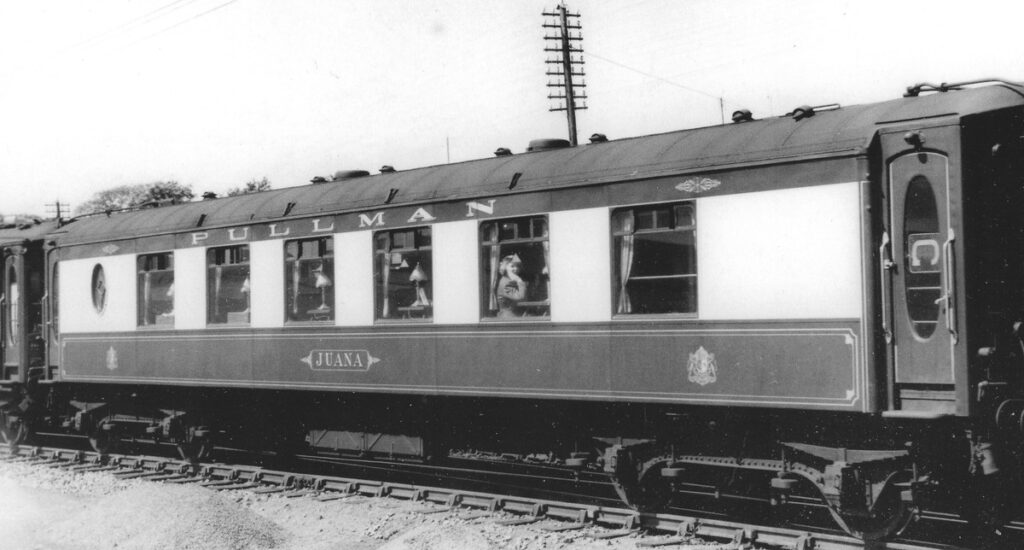
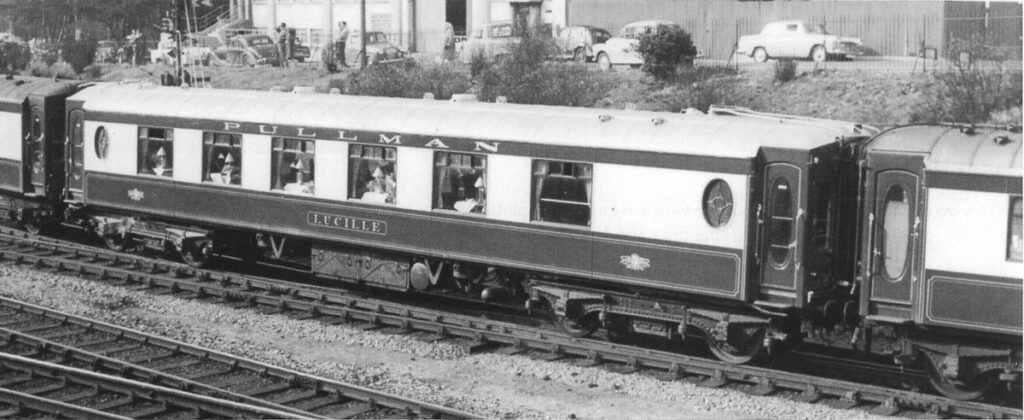
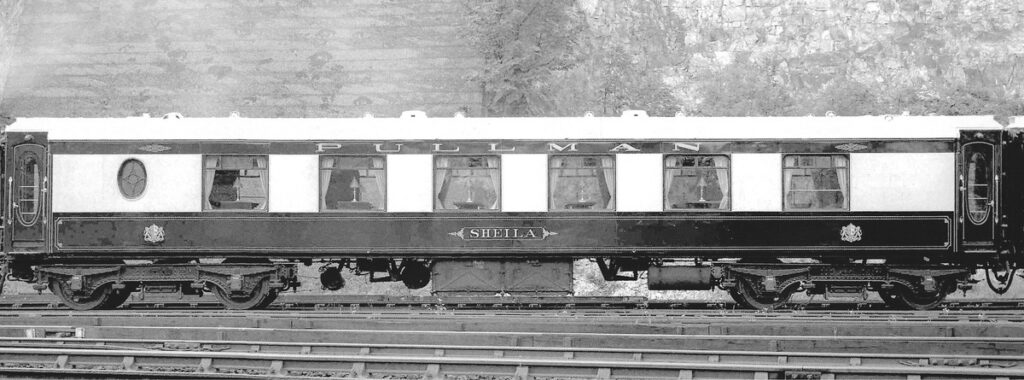
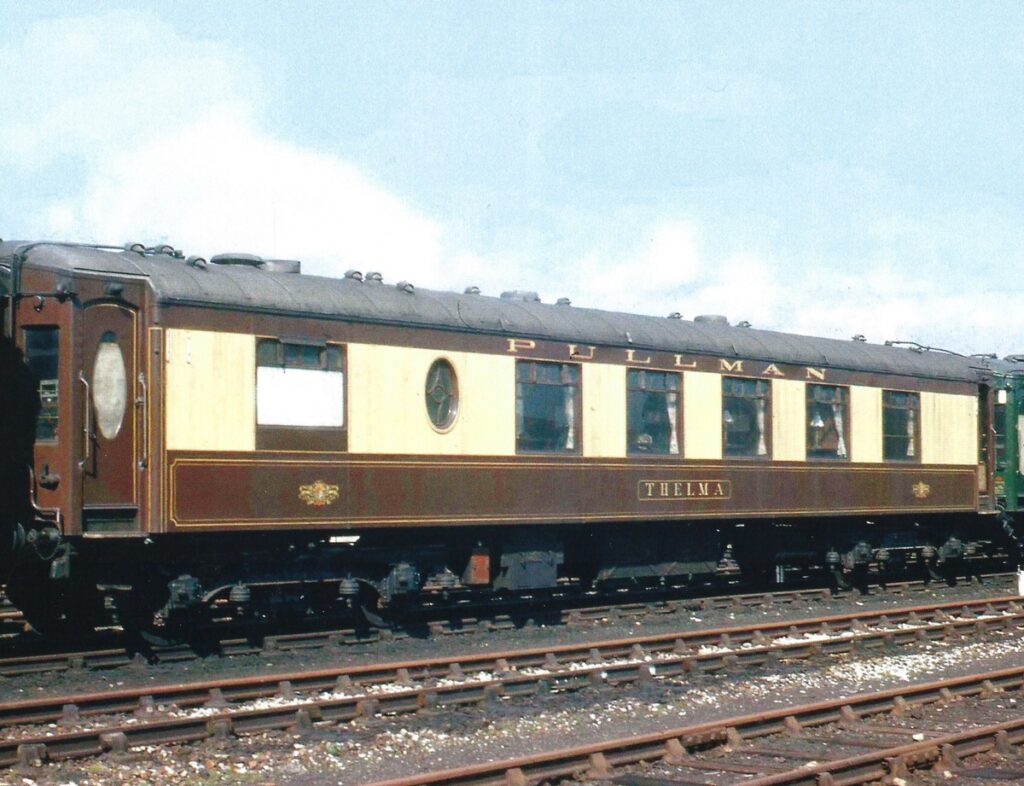
K-Type Pullmans come as follows
- First and third-class parlour cars
- First and third-class kitchen cars and
- Third-class parlour brakes.
In addition, we will consider producing a special range of Pullman Bar Cars if there is sufficient interest.
Only four of the original K-Type cars were ever built as third-class parlour brakes – none as first-class parlour brakes. However, six of the original K-Type third-class kitchen cars nos. 67-72 were later converted into parlour brake cars and these form an additional BR period Pullman brake offering. The rebuilt parlour brakes are different to the original set cars nos. 77-80 built for Queen of Scots’ running. The differences include revised roof layout at luggage end, smaller drop windows on either side of the guard’s luggage area, no roof brackets as carriage boards moved to the cantrail at brake car ends and revised light fitting above guard’s door. They were of a more modern appearance.
Whilst there was always a degree of fluidity over how Pullman cars were allocated to specific regions and services, cars marked with * were originally scheduled for GWR and then Southern Railway Pullman services. Cars marked with ~ were specifically assigned to the Bournemouth Belle. Named and numbered Pullman cars without suffixes largely operated on east coast routes with the Queen of Scots and West Riding Pullman etc.
Options for reservation
All Pullman cars come in umber and cream livery with grey roofs.
Individual car price: £1,250
Pairs of Pullman brakes and two other cars £4,780
Orders of more than four vehicles are priced at £1,195 per car.
Pullman car specifications
- Meticulously researched using original drawings, image material and examples of preserved and modified stock
- Beautiful hand-made solid brass fine scale soldered construction ensuring superb body detail – note roof bodies are constructed in brass
- Interior lighting provided by central LED roof lighting and Pullman table lamps
- Finished in long-lasting and robust oven baked satin paint
- Carriage nameboards commemorating famous Pullman expresses
- Ball bearing mounted axel boxes for free running bogies
- Solid stainless steel disc wheels
- Three coupling types: Pullman cars come with standard Kadee style couplings. Conversion packs for screw link drop or alternative buckeye couplings are available
- Removeable bodies for the fitting of figures.
Pullman Brakes
In 1928 six new steel-sided third-class Pullman K-Type kitchen cars nos. 67-72 were introduced to the long-distance Queen of Scots’ service. At the end of the 1950s, they were converted into parlour brake cars. Reproduced in umber and cream livery to complement the later BR era, these renewed parlour brakes are different to the original set of four brake cars nos. 77-80 built for Queen of Scots’ running. The differences include revised roof layout at luggage end, smaller drop windows on either side of the guard’s luggage area, no roof brackets as carriage boards moved to the cantrail at brake car ends, removal of the third-class designation, and the adoption of simplified lining and updated Pullman crest and insignia.
Typically, the parlour brakes ran top and tail with a new set of 44 Pullman cars built by Metropolitan-Cammell Carriage & Wagon Company in 1960. Aside the main East Coast Pullmans such as Queen of Scots, Tees-Tyne Pullman and Yorkshire Pullman, new named express services appeared including White Rose Pullman, Sheffield Pullman, and The Harrogate Sunday Pullman. The converted brake sets lasted until the demise of the old life expired Pullman stock providing innovative and highly attractive models and express train formations of a more modern provenance.
Customers may choose between named train roof boards or carriage side boards. These are supplied in umber and cream. If customers wish to obtain further Pullman named train or car end boards, they can be purchased via our carriage sundries page. Current named train boards suitable for Pullman cars are as follows:
Pre-nationalisation Pullmans
| First-class parlour cars | First-class kitchen cars |
|---|---|
| Agatha | Belinda |
| Eunice* | Evadne* |
| Juana* | Ione* |
| Lucille* | Joan* |
| Ursula* | Lorraine* |
| Sheila | Nilar |
| Zena* | Phyllis |
| Thelma |
| Third-class parlour cars | Third-class kitchen cars |
|---|---|
| Car no. 73 | Car no. 67 |
| Car no. 74 | Car no. 68 |
| Car no. 75 | Car no. 69 |
| Car no. 76 | Car no. 70 |
| Car no. 81 ~ | Car no. 71 |
| Car no. 82 ~ | Car no. 72 |
| Car no. 83 ~ | |
| Car no. 84 ~ |
| Third-class parlour brake cars |
|---|
| Brake car no. 77 |
| Brake car no. 78 |
| Brake car no. 79 |
| Brake car no. 80 |
BR Period Pullmans
| First-class parlour cars | First-class kitchen cars |
|---|---|
| Agatha | Belinda |
| Eunice | Evadne |
| Juana | Ione |
| Lucille | Joan |
| Ursula | Lorraine |
| Sheila | Nilar |
| Zena | Phyllis |
| Thelma |
| Parlour cars | Old style parlour brake cars |
|---|---|
| Car no. 73 | Brake car no. 77 |
| Car no. 74 | Brake car no. 78 |
| Car no. 75 | Brake car no. 79 |
| Car no. 76 | Brake car no. 80 |
| Car no. 83 | |
| Car no. 84 |
| New style parlour brake cars |
|---|
| Brake car no. 67 |
| Brake car no. 68 |
| Brake car no. 69 |
| Brake car no. 70 |
| Brake car no. 71 |
| Brake car no. 72 |
For customers wishing to customise their Pullman car rakes additional Pullman named train roof boards, carriage boards and brake car end boards may be purchased via our carriage sundries page. Named train boards suitable for Pullman cars are as follows:
Pullman car destination boards
| LNER/BR Eastern Region | Southern Railway/BR Southern Region |
|---|---|
| Queen of Scots and carriage end boards | Bournemouth Belle and carriage end board |
| Sheffield Pullman | Ocean Liner Express – Waterloo Southampton Docks |
| Tees-Tyne Pullman | The Cunarder – RMS Queen Mary |
| The Harrogate Sunday Pullman | The Cunarder – RMS Queen Elizabeth |
| White Rose Pullman | Statesman – SS United States |
| Yorkshire Pullman and carriage end boards | The South American – Waterloo Southampton Docks |
| Brittany Express – Waterloo Southampton Docks | |
| Normandy Express – Waterloo Southampton Docks |
K-Type Pullmans in umber and ivory white


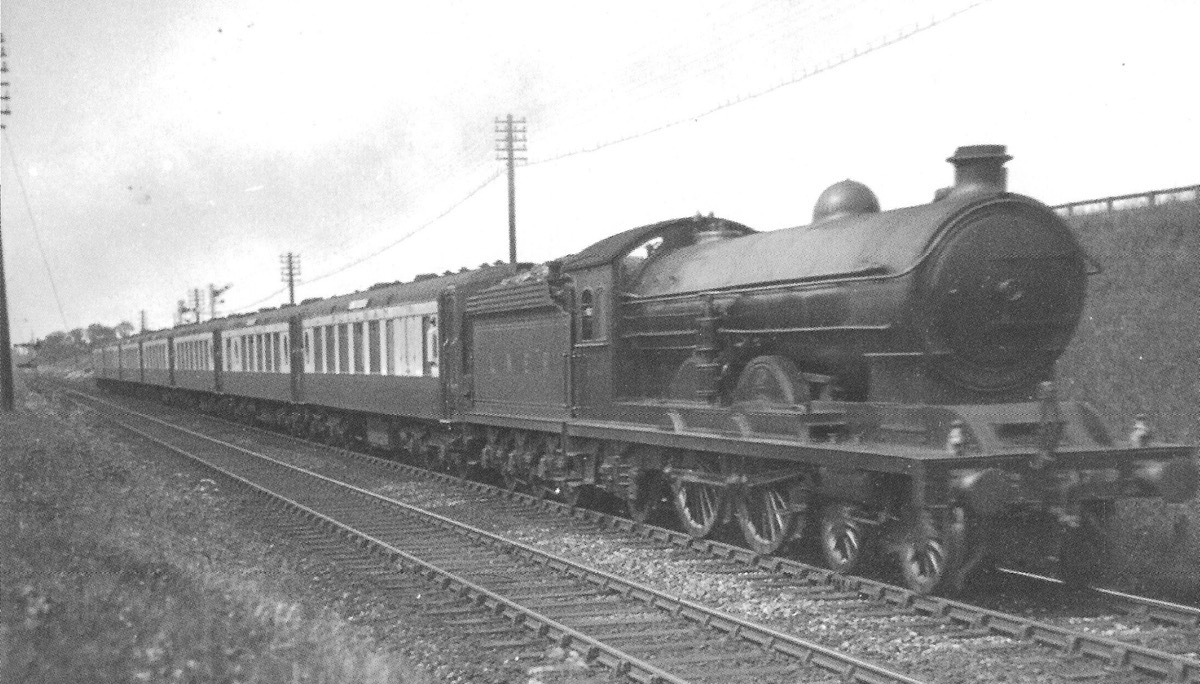
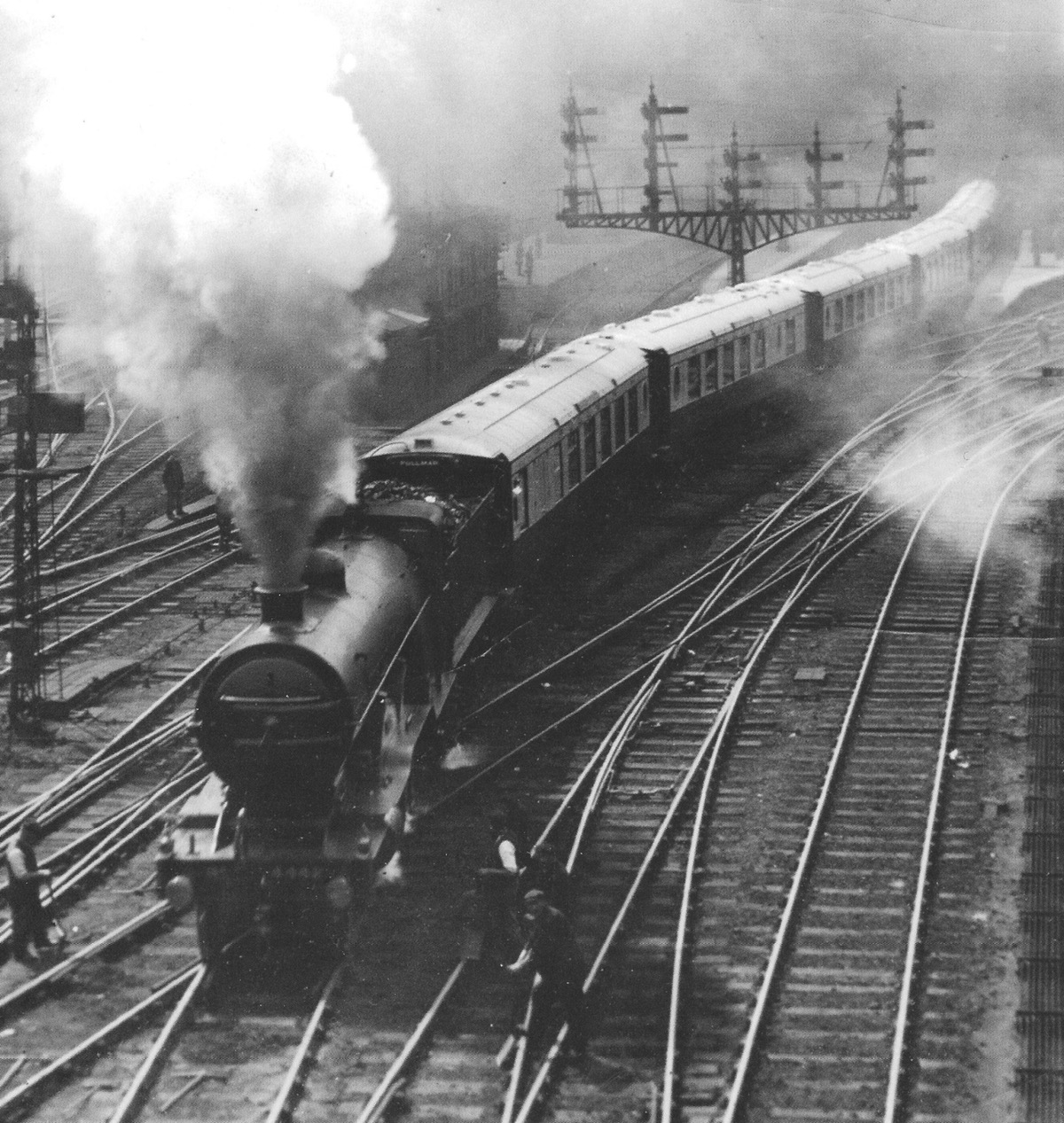

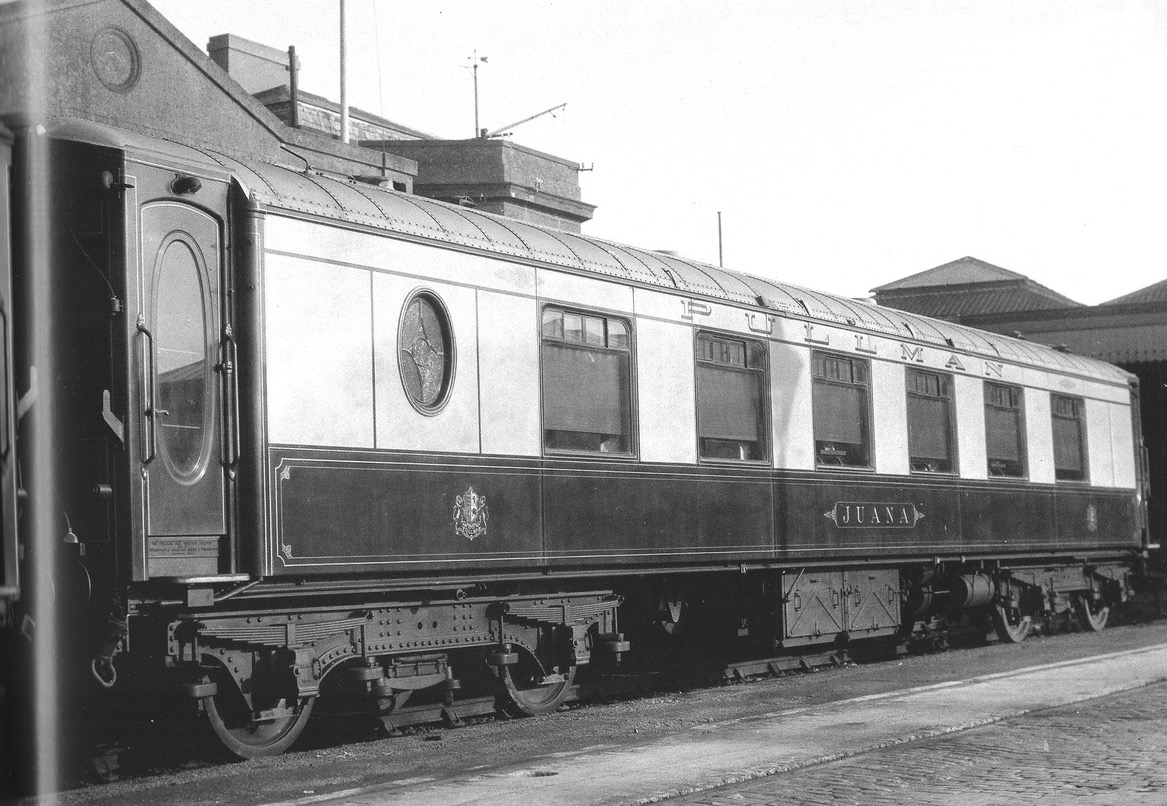
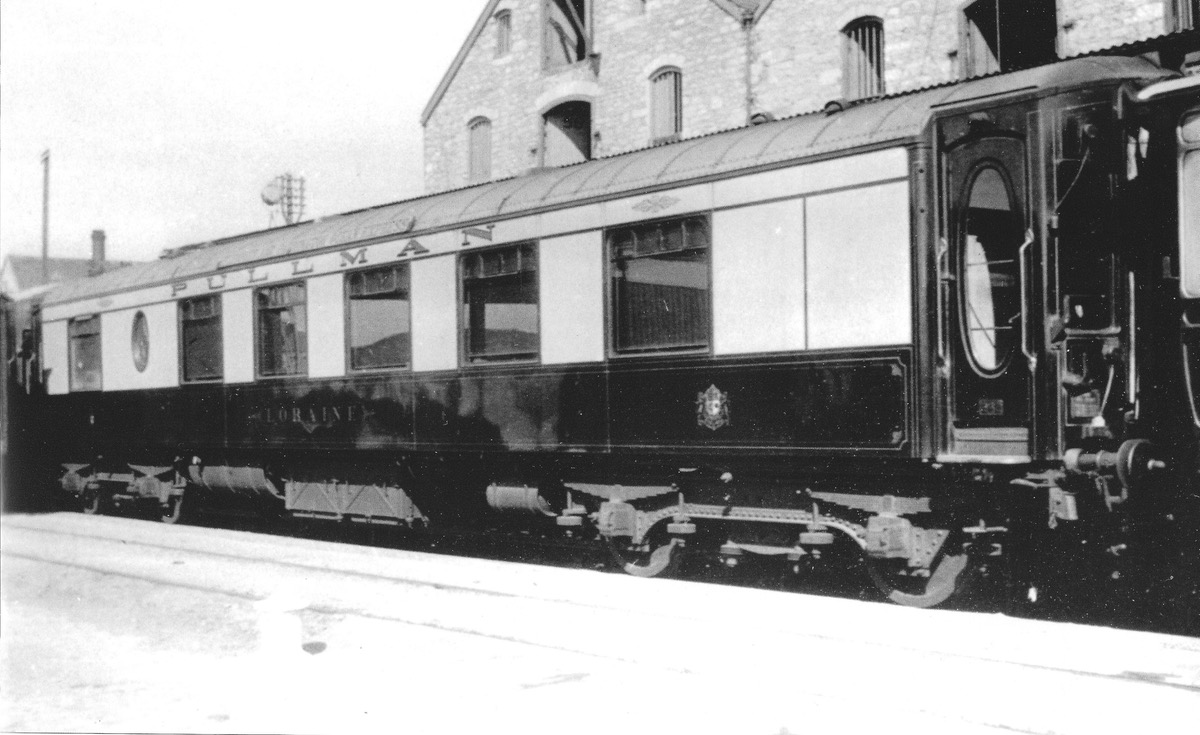
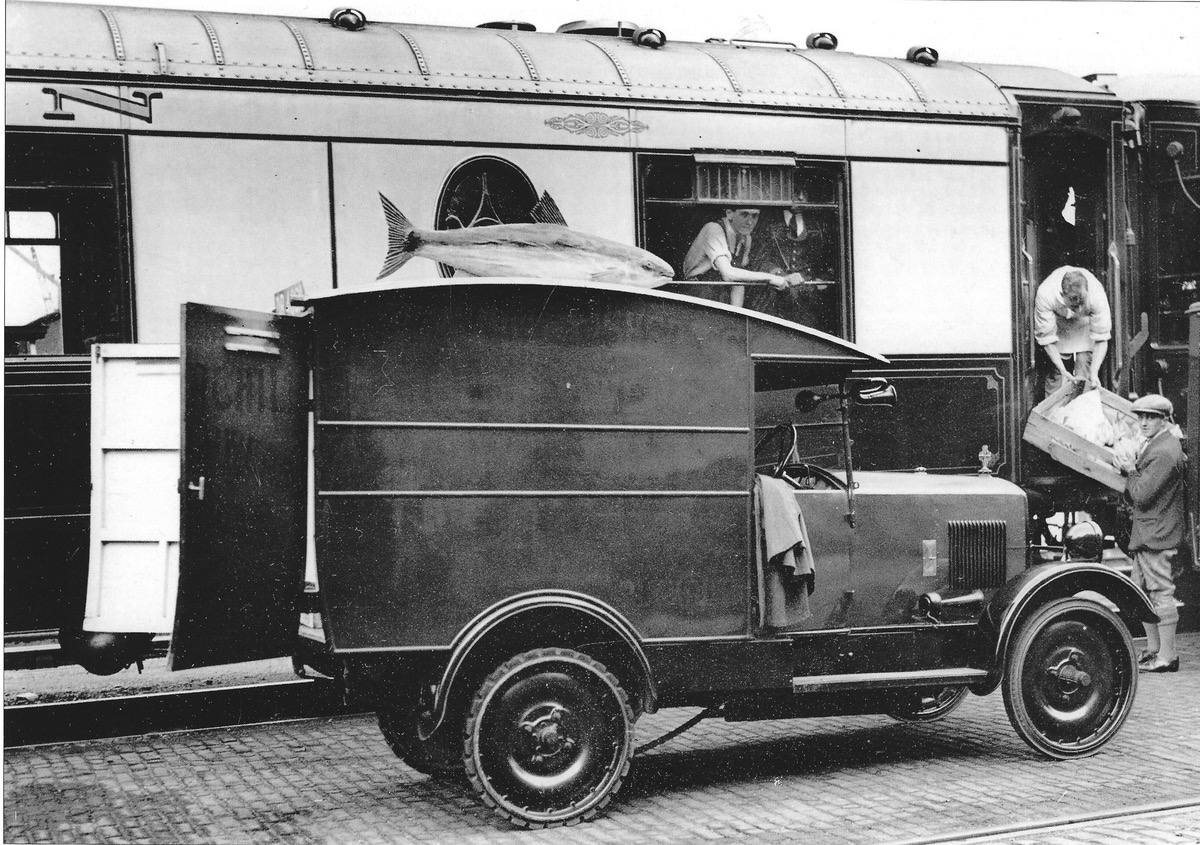

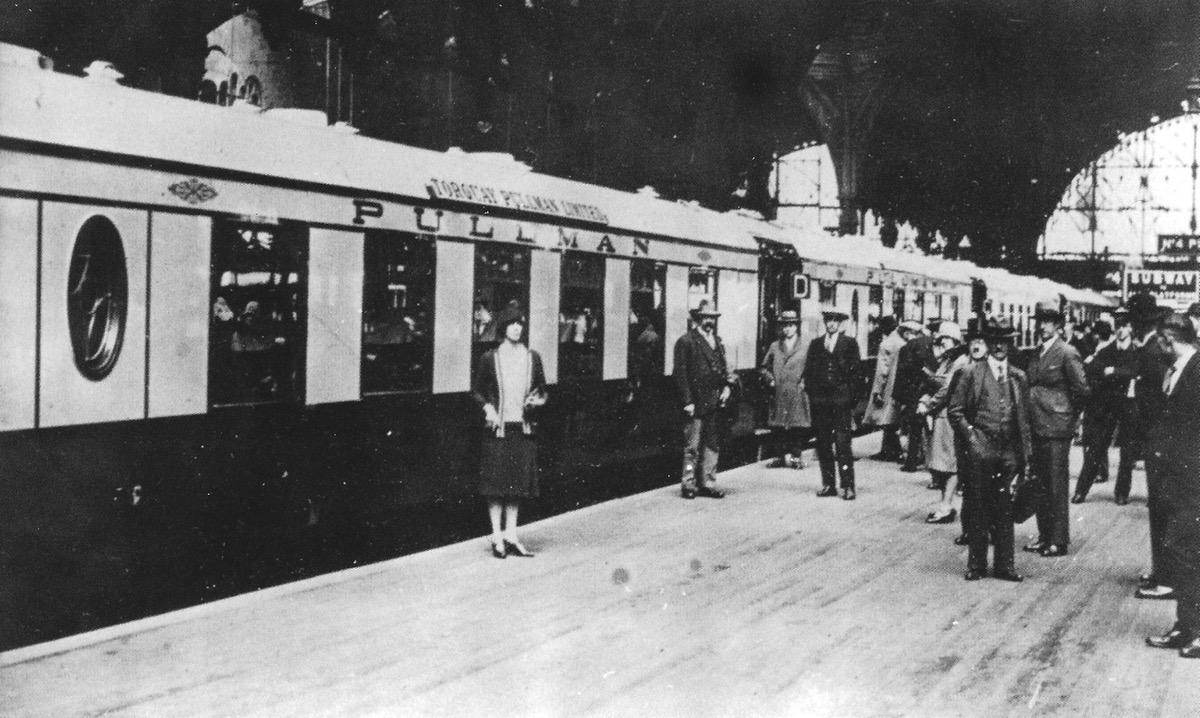
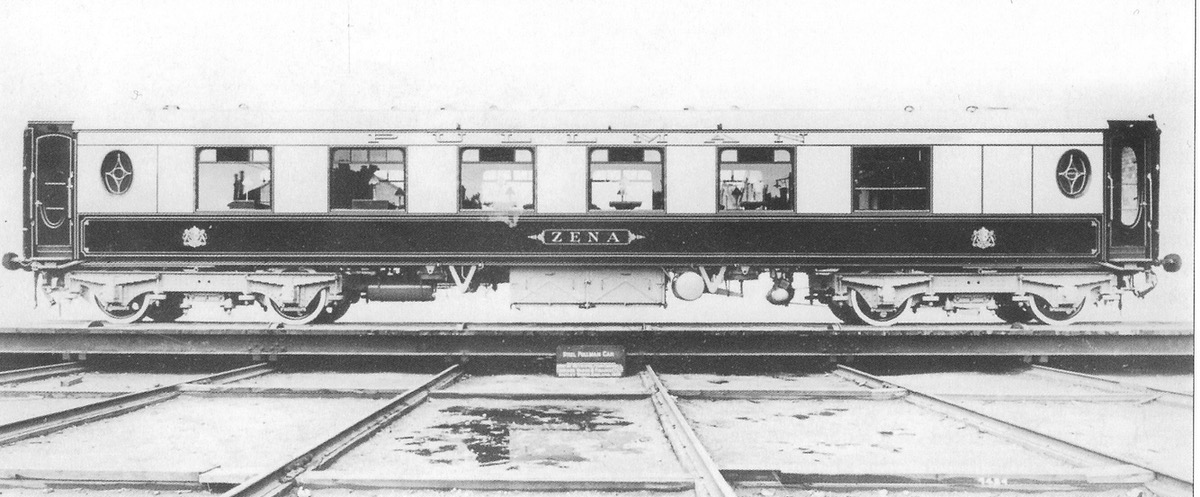
All the K-Type first and third-class parlour cars and first-class kitchen cars introduced for LNER and GWR services were originally finished in a livery of umber and ivory white waist band to cantrail/roofline. They were accompanied in the main by 12-wheeler first and third-class parlour brake cars which were later repainted in the traditional umber and cream livery during the 1930s. 12-wheeler brakes with their sliding Crittall doors lasted up until 1967 on the Bournemouth Belle. A later Pullman development will be 12-wheelers which started life in the post-Great War period and were finished in umber and ivory white livery – sometimes referred to as the White Pullman era.
If there is sufficient customer interest, we will produce an additional batch of K-type first and third-class parlour cars and first-class kitchen cars in the umber and ivory white waist band livery which will appeal particularly to customers running LNER and GWR locomotives. These Pullmans will come with white roofs.
Please contact us directly if you are interested in these developments.
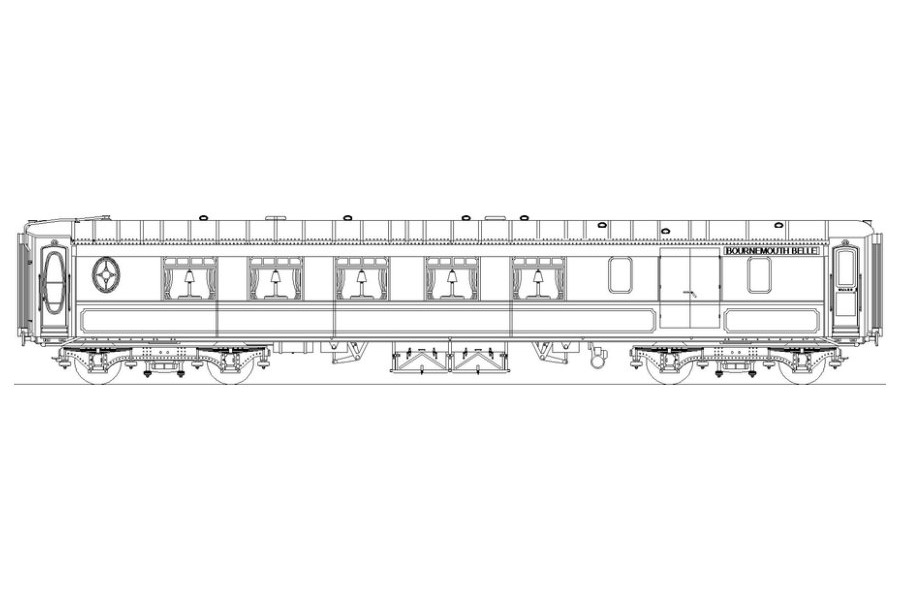
Gauge 1 Pullman Cars
All Pullman cars come in umber and cream livery with grey roofs.
Individual car price: £1,250
Pairs of Pullman brakes and two other cars £4,780
Orders of more than four vehicles are priced at £1,195 per car.
